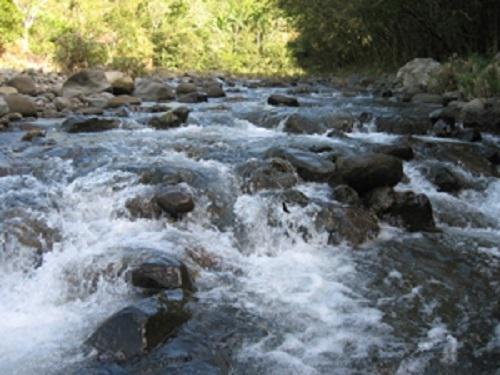Pedro López Del Castillo
Other projects
25 Feb 2013
Watershed Conservation in Cuba: Bio-Monitoring, Training and Environmental Education II
14 Jul 2014
Watershed Conservation in Cuba: Bio-monitoring, Training and Environmental Education III
Aims are to assess watershed’s integrity, to characterize threats of conservation on Yara watershed, to use environmental education to increase the knowledge of people living in the watersheds about the watershed’s conservation.

Collecting aquatic insects.
Yara watershed is placed in central-north part of Sierra Maestra Massif Range, which is the biggest mountain range in Cuba, as well as the most important biodiversity site in the West Indies (Hotspot by CI and part of the 238 eco-regions wide world WWF). It is formed mainly by two sub-watersheds Yara and Nagua. Yara river flows across the north part of Turquino National Park in where you might find diversified vegetation (e.g. evergreen forest, rainforest and cloud forest) that are shelters and habitats for several threatened and endemic species included in the Redlist of the Cuban fauna and flora (e.g. Cuban boa Epicrates angulifer, hawk Accipiter gundlachi and hutias Capromys pilorides and C. prehensilis). Nagua is formed by secondary forests. Its soil is used primarily in coffee plantation, intensive agriculture and silviculture. Yara Watershed provides water for drinking purposes, for generating electricity, for domestic use, for agriculture and recreation.

The Yara river.
Principal threats in watersheds are replacement of natural vegetation mainly for agriculture use (e.g. farmers make use of logging and fire to make smallholding, coffee enterprises use a lot of chemistry fertilizer and pest), illegal hunting and logging. All these actions have serious result in watershed integrity (e.g. deforestation, loss and fragmentation of habitats, loss of soil and pollution of waters) Numerous studies have demonstrated the relationship between land use changes and biological degradation of streams that have a direct impact on watersheds. Rivers and watersheds are not healthy around the world and Cuba does not escape to this problem. In Cuba we don’t have information about relationship between land use and consequences on watershed “health”.
For the first time in Cuba information about bio-monitoring on watersheds will be obtained and will constitute the base-line about bio-monitoring on watersheds, as well as to produce data to allow us to evaluate water quality and watershed “health”.
Finally, a critical aspect is related with environmental education and training that plays a vital role in the present project. Our aim is to carry science to communities and communities to science. We will offer lectures and training on different aspects of conservation biology in watersheds (e.g. biodiversity, bio-monitoring, agro-ecology, etc.) in the majority of communities and schools inside the watersheds.